This was published 5 years ago
White House orders direct talks with Taliban on Afghanistan
By Mujib Mashal
Kabul: The Trump administration has told its top diplomats to seek direct talks with the Taliban, a significant shift in US policy in Afghanistan, done in the hope of jump-starting negotiations to end the 17-year war.
The Taliban have long said they will first discuss peace only with the Americans, who toppled their regime in Afghanistan in 2001. But the US has mostly insisted that the Afghan government must take part.
The recent strategy shift, which was confirmed by several senior American and Afghan officials, is intended to bring those two positions closer and lead to broader, formal negotiations to end the long war.
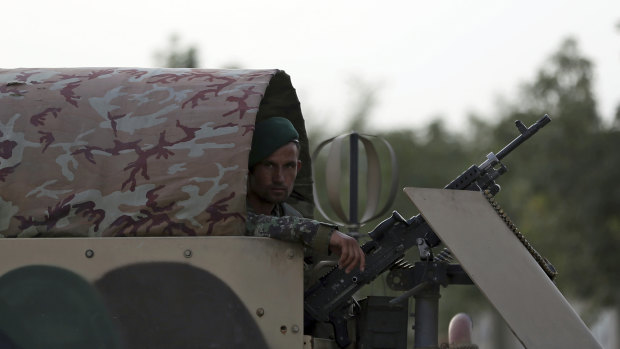
A National Army soldier stands guard near a deadly attack outside the Rural Rehabilitation and Development Ministry in Kabul, Afghanistan, Sunday, July 15, 2018Credit: AP
Over the weekend, seven people were killed and 15 others wounded when a suicide bomber detonated his explosives-laden vest in Kabul.
Kabul police spokesman Hashmat Stanekzai said a suicide bomber on foot struck outside the Rural Rehabilitation and Development Ministry.
The shift to prioritise initial US talks with the Taliban over what has proved a futile "Afghan-led, Afghan-owned" process stems from a realisation by both Afghan and American officials that President Donald Trump's new Afghanistan strategy is not making a fundamental difference in rolling back Taliban gains.
While no date for any talks has been set, and the effort could still be derailed, the willingness of the US to pursue direct talks is an indication of the sense of urgency in the administration to break the stalemate in Afghanistan.
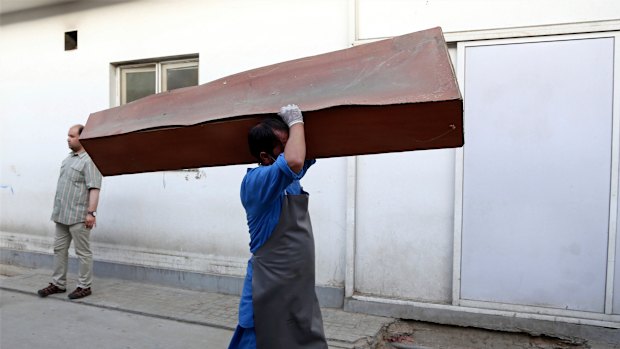
An Afghan man carries an empty coffin in the hospital following a deadly attack outside the Rural Rehabilitation and Development Ministry in Kabul, Afghanistan, on Sunday.Credit: AP
Not long after he took office, Trump reluctantly agreed to provide more resources to his field commanders fighting the Taliban, adding a few thousand troops to bring the US total to about 15,000. But a year later the insurgent group continues to threaten Afghan districts and cities and inflict heavy casualties on the country's security forces.
The government controls or influences 229 of Afghanistan's 407 districts, and the Taliban 59. The remaining 119 districts are contested, according the Office of the Special Inspector General for Afghanistan Reconstruction, which was created by Congress to monitor progress in the country.
Providing more authority to U.S. diplomats, a move that was decided on last month by Trump's national security aides, is seen as part of a wider push to inject new momentum into efforts to end the war. Those efforts include a rare ceasefire last month, increased US pressure on Pakistan to stop providing sanctuary to Taliban leaders and a rallying of Islamic nations against the insurgency's ideology. Grassroots peace movements in the region have also increased pressure on all sides.
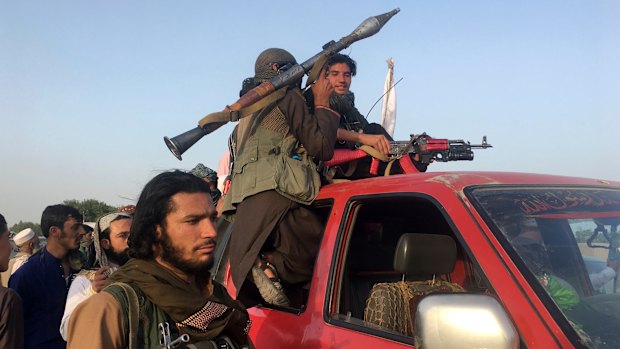
Taliban fighters ride in their vehicle in Surkhroad district of Nangarhar province, east of Kabul, Afghanistan, on Saturday.Credit: AP
Over the past few weeks senior American officials have flown to Afghanistan and Pakistan to lay the groundwork for direct US-Taliban talks. Secretary of State Mike Pompeo briefly visited the Afghan capital, Kabul, last week, and Alice G. Wells, the top diplomat for the region, spent several days holding talks with major players in Afghanistan and Pakistan.
Efforts have particularly focused on trying to persuade the Afghan leadership that such talks are not a replacement for negotiations with the country's coalition government, but are meant to break the ice and pave the way for those. Because the previous Afghan government felt left out of peace efforts during the Obama administration, it resisted direct talks, which was one reason peace efforts at that time collapsed.
Neither the State Department nor a Taliban spokesman would comment on the shift of policy toward engaging the Taliban directly.
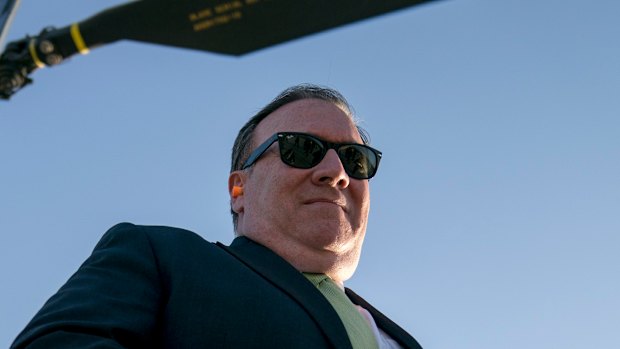
US Secretary of State Mike Pompeo arrives at Camp Alvarado in Kabul, Afghanistan after meeting with Afghan President Ashraf Ghani on July 9.Credit: AP
Wells, during her trip to Kabul, reported a new "energy and impulse for everyone to renew their efforts to find a negotiated settlement," largely as a result of the ceasefire. Days earlier, Pompeo, in a statement, said that there would be no precondition for talks — and that everything, including the presence of US and NATO troops in Afghanistan, was up for discussion.
President Ashraf Ghani of Afghanistan said last month at a news conference that the peace process would be a complicated, layered effort rolled out in phases that were still in the preparatory stage. He left open the possibility of a more direct US role in the early efforts.
"Various ideas, creative ideas are floating on how to break this logjam and get started," Ghani said.
A near-consensus has grown among American and Afghan officials involved in earlier and current efforts to fire up a peace process that the only way out of the war is for the United States to take a more direct role in negotiations.
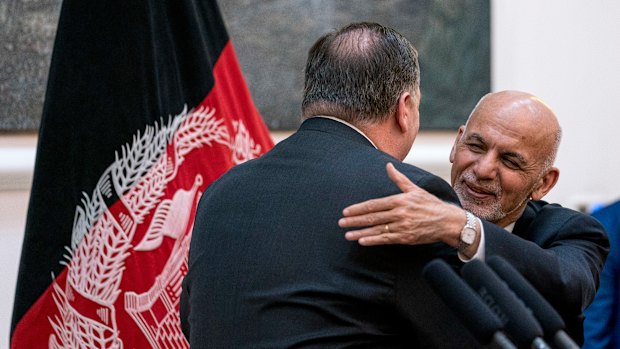
Afghan President Ashraf Ghani, right, and Secretary of State Mike Pompeo, left, hug following a news conference at the Presidential Palace in Kabul, Afghanistan, on July 9.Credit: AP
That realisation rests on several facts: that the Taliban are a stubborn insurgency, that they have not budged on their demand to talk directly with the Americans, and that the Afghan government, mired in infighting and marred by political opposition, would struggle to lead a cohesive peace agenda without American help.
Officials have been moving with a sense of urgency because Trump has expressed his frustration with the war and is desperate to see its end, said a senior US official.
During last week's NATO summit meeting in Brussels, Trump expressed agreement with a reporter's question that contained the notion that "people are fed up" with the Afghan war.
"Yeah," Trump said on Thursday. "I agree with that. I very much agree. It's been going on for a long time. We've made a lot of progress, but it's been going on for a long time."
An important distinguishing factor of the recent push, according to officials involved in previous efforts, is that the US military seems very much on board.
In 2011, when the Obama administration first shifted to a policy of ending the war through negotiations, military commanders still believed they could defeat the Taliban. Now, they define their goal more modestly: keeping the Taliban from victory until a political settlement is reached.
Even if talks do begin again, many observers point to how difficult they will be.
Seth Jones, who heads the Transnational Threats Project at the Centre for Strategic and International Studies in Washington, said there was little evidence that the Taliban's senior leaders were seriously interested in settlement terms acceptable to Afghan and American officials.
"Most Taliban leaders believe they are winning the war in Afghanistan and that time is on their side," Jones said.
New York Times